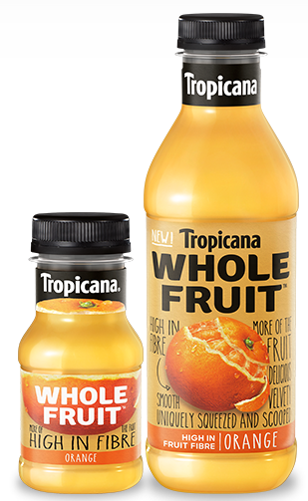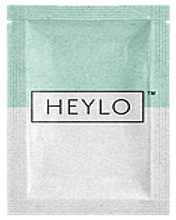What is dietary fiber?
Dietary fibers are the carbohydrates found in plants like nuts, fruits, and vegetables, which the body can’t digest, instead, it passes through the stomach, small intestine, and colon and out of your body. Some of the commonly used dietary fibers include inulin, polydextrose, beta-glucan, and others.
Types of Dietary fiber:
Dietary fibers are divided into significant types, as shown in Exhibit 1:
Soluble fiber
Soluble fiber is the dietary fibers that form a gel-like composition in combination with water. It helps reducing blood sugar levels in diabetic individuals. Some familiar sources include oat, flaxseeds, kidney beans, and brussels sprouts that are more prominently used in bakery products.
Major players active in the field include food giants Kellogg’s, Mondelez International, and General Mills. Few common examples of soluble fiber include fructooligosaccharides, beta-glucan, inulin, among others.
Insoluble fiber
Insoluble fibers are the dietary fibers that are not broken down by gut and pass through the digestive system into the colon, regulating bowel. It helps in increasing gut microflora. They do not dissolve in water. Some of the sources include whole grains, wheat bran, and legumes.
Retail brands such as Tesco and baking firm Warburtons are some of the active players with dietary fiber-based products. Few common examples of insoluble fiber include cellulose, lignin, and others.
Resistant starch
Resistant starch is starch molecules that resist digestion and has functioning similar to soluble fibers. It produces resistance in the small intestine and ferments in the large intestine. They are converted into short-chain fatty acids by intestinal bacteria. Sources of resistant starch include raw green banana, beans, peas, whole grains like oats, barley. It is linked with improving blood sugar levels, reduced appetite, and increasing intestinal microflora.
Top entities using resistant starch in their product include Campbell’s, Glico, and others.
Need for dietary fibers
Dietary fiber helps to regulate health functions such as gastrointestinal health, metabolic diseases like obesity, blood sugar levels, diabetes, and others.
World Health Organization (WHO) states that “Overweight and obesity are major risk factors for several chronic diseases, including diabetes, cardiovascular diseases, and cancer.” Since 1975, globally, obesity has nearly tripled with around 1.9 billion obese adults in 2016. Additionally, in 2019 approximately 38 million children under five years were classified as obese/overweight.
High-calorie and sugar-based products are considered as significant factors to increase the number of obese children. Food products such as sugary beverages, baked products, cookies, biscuits, pastries, sugar-based confectionaries, etc. are in the culprit radar. Dietary fibers replace fats or sugars, thus limiting the volume of sugars or fats added in the products and offer additional to nutritional value.
What are the benefits of dietary fiber?
Dietary fiber helps regulate your gut health by normalizing and maintaining bowel movements. Dietary fibers increase the stool weight, increase the stool size, and softens the stools, making it easier to pass through the intestine and reduce constipation. A high fiber diet also helps to decrease hemorrhoids and small pouches in the colon (diverticular disease).
Soluble fibers in plants like beans, oats, and flaxseed may help to lower total blood cholesterol levels by decreasing lipoprotein (“bad” cholesterol). It is also linked with slow absorption of sugar, improving blood sugar levels.
High-fiber helps to maintain a healthy weight as it is bulky and more filling than low fiber foods keeping a person to eat less and stay satisfied for a longer time.
Benefits and use of dietary fiber in food products
Dietary fibers are includes in various kinds of food products like bakery, confectionery, cereals, and beverages.
Benefits
- Optimizing texture
- Improving nutritional value
- Better sensory attributes and mouth-feel
- Improves water retention
Uses of dietary fibers
- Hydrocolloid agent
- Bulking agent
- Low-fat alternative
- Sugar alternative
- Clean label ingredient for meat alternatives
- Prebiotic agents
Which products contain dietary fiber?
Common food product categories
Dietary fibers are used in a wide range of food products with different positional claims such as fat/sugar alternative. Exhibit 2 provides an overview of the range of products launched with dietary fibers over that past five years, globally.
Innovative and unique products entering the market
Tropicana Whole Fruit (Orange)
 It is a new range of juices launched in the UK in May 2019. It uses a unique pressing process that uses the fruit entirely. This method retains fiber as well as crucial nutrients.
It is a new range of juices launched in the UK in May 2019. It uses a unique pressing process that uses the fruit entirely. This method retains fiber as well as crucial nutrients.
Note: Tropicana has filed a patent on the processing method for reducing the viscosity of high-fiber beverages.
 It is a patented composition to be used as a sugar alternative made of acacia and stevia. It is water-soluble and is 10-15 times sweeter than sugar. It comes in three formats: white sugar alternative (granulate), brown sugar alternative (granulate), and liquid.
It is a patented composition to be used as a sugar alternative made of acacia and stevia. It is water-soluble and is 10-15 times sweeter than sugar. It comes in three formats: white sugar alternative (granulate), brown sugar alternative (granulate), and liquid.
Note: It is a patented composition
Upcycling cocoa pod waste
Nestlé is using cocoa pulp for enhancing the sweetness and replacing refined sugar in chocolate confectionery to reduce sugar and add natural fiber in its product. The chocolate by-product is used effectively.
What are the dietary fiber trends?
Consumer perception of dietary fibers
Consumers prefer the inclusion of natural ingredients like fats, proteins, and carbohydrates in their daily diets that include products such as bread, biscuits, beverages, etc. Consumer perception regarding processed foods has also evolved, and they prefer to check the ingredients and claims before buying the products. In recent years, dietary fiber has emerged to be one of the significant trends in this “healthy eating” era.
Players active in countries such as the USA, Japan, UK, Spain, China, etc. position their products with like “contains prebiotics,” “rich in dietary fiber,” “added fibers,” “high fibers,” and others for promoting their products as functional and healthy. Exhibit 3 indicates consumer understanding and preferences regarding the positional claims to purchase processed foods and beverages.
Product positional claims have become a potential option for producing and marketing products containing dietary fibers. Additionally, these products are primarily targeted towards health-conscious adults, especially those in corporate offices with busy lifestyles and reduced physical activities.
Industry trend on dietary fibers
Active companies are innovating and introducing customized products based on the nutritional requirements for specific consumer demographics such as age, geography, lifestyle, and health issues.
Fibers used as sugar alternatives serve as a good option for markets such as Latin America and European countries that have implemented sugar taxes in food products.
Globally, dietary fiber-based products are introduced in the markets. Exhibit 4 illustrates the top 10 countries with the highest launches of dietary fiber-based food products that include developed countries like the USA, UK, France, and Japan. More consumer awareness, as well as product introduction activity, are observed in the USA and China in comparison to other countries.
References
- Dietary fiber: Essential for a healthy diet
- Scientific article on soluble & insoluble dietary fiber
- World Health Organization
- Newsletter
- Patent Database – Espacenet
- Product Database – Mintel GNPD and Consumer Insights
Need a thought partner?
Share your focus area or question to engage with our Analysts through the Business Objectives service.
Submit My Business ObjectiveOur Clients
Our long-standing clients include some of the worlds leading brands and forward-thinking corporations.
- © 2021 Cheers Interactive (India) Private Limited. All rights reserved. FutureBridge ® is a registered trademark of Cheers Interactive (India) Private Limited.




































